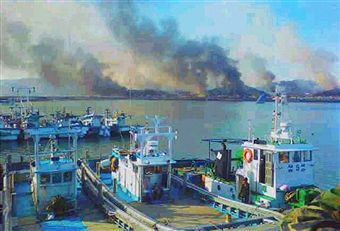 North Korea has again put itself at the centre of international relations. As the US
pushed for a start to six-party talks, Pyongyang lifted the veil on a hitherto secret uranium-enrichment facility and launched an artillery barrage on a South Korean island, injuring four
soldiers, and damaging several buildings. The South Korean military scrambled fighter jets and returned fire and the situations remains tense.
North Korea has again put itself at the centre of international relations. As the US
pushed for a start to six-party talks, Pyongyang lifted the veil on a hitherto secret uranium-enrichment facility and launched an artillery barrage on a South Korean island, injuring four
soldiers, and damaging several buildings. The South Korean military scrambled fighter jets and returned fire and the situations remains tense.
Conflict with nuclear-armed North Korea has intensified in recent years. North Korea launched nuclear and missile tests last year and sank a South Korean warship in March this year, killing 46 sailors. But the first ground-to-ground assault across the DMZ represents a new escalation in the decades-long, but usually non-violent conflict.
What is North Korea up to? The maritime boundary has long been a bone of contention between the two countries. The North does not recognise the border that was drawn by the United Nations when the 1950-53 Korean War ended. Pyongyang is also said covet the fish-rich waters around Yeonpyeong island. The South Korean military was conducting drills near Yeonpyeong island when the North opened fire.
But that does not explain today’s flare-up. More likely, the North Koreans are trying to set favourable ground for any talks that may begin (so they can extract concessions), while telling external and internal audiences that despite Kim Jong Ill having unveiled his youngest son Kim Jong Un as his heir apparent, succession will not weaken the North.
The West has relatively few levers to change North Korea’s behaviour – except to swear to protect South Korea (and Japan) in case of a full-scale war; or offer North Korea assistance. Neither are attractive options. The real challenge is therefore China’s. Only China can influence (but probably not control) North Korea. But will Beijing show the responsibility that comes with power and try to rein in its hermit-like neighbour?






Comments